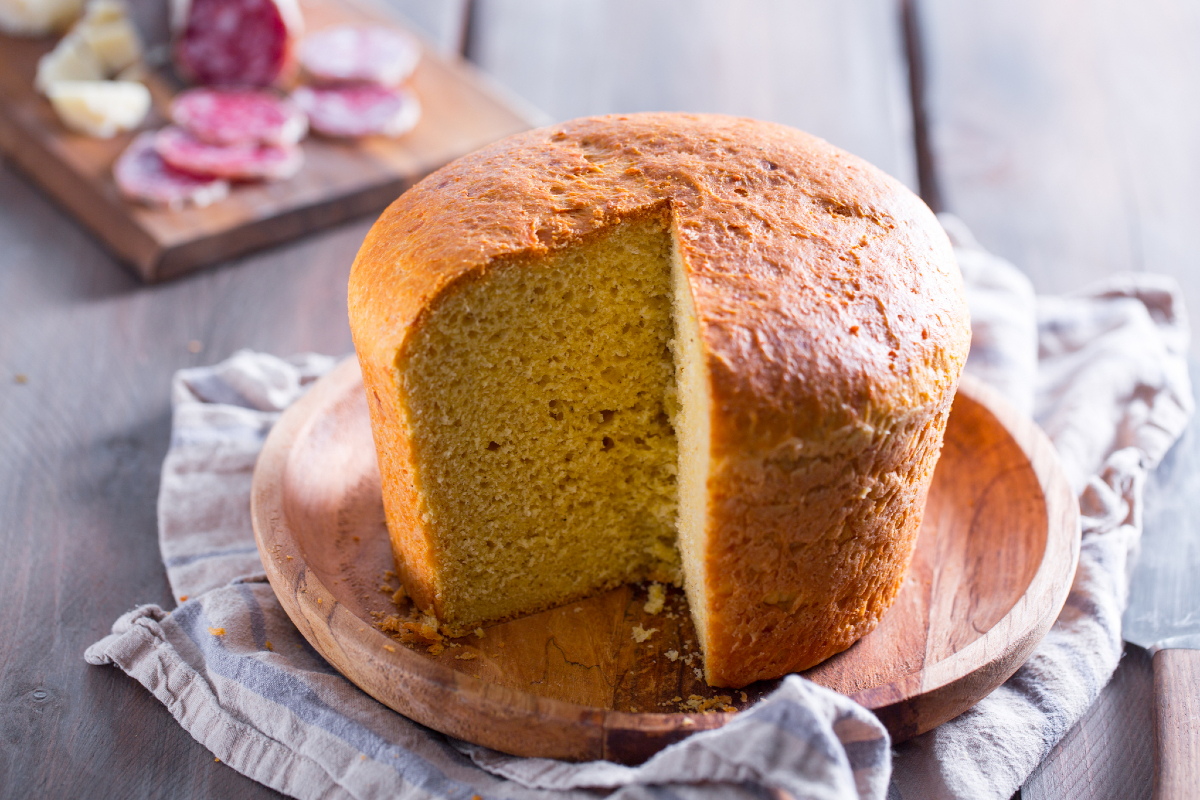Ciaccia with Friccioli
- Average
- 4 h 10 min
- Kcal 1204

If you are craving a taste of Italy's Marche and Umbria regions around Easter, you gotta try crescia al formaggio. It's not just any old bread—it's a savory, spongy delight, loaded with Parmigiano Reggiano DOP and Pecorino. And you know what? Some versions even sneak in extra cheese chunks. Seriously good.
Its shape might remind you of panettone, but, really, don’t be fooled. This bread is all about that salty, cheesy bite with a tender inside that makes you come back for more. Every family has their own twist—like little secrets passed down—that make each crescia just a tad different. Slice it up with cured meats and you get a bite that's both moist and packed with rich flavor. It's a big part of Easter celebrations here, alongside colomba salata and ciaramicola.
But listen, you don’t need a holiday to enjoy Italian Easter cheese bread. It makes everyday bread baskets something special. And here's the thing—in Umbria, it's a must for Easter morning, while in Marche, it's key for family gatherings. Pretty much essential. You can really savor that golden crust and the cheesy mix, which gives each slice a tangy kick. Some say it's like torta al testo or a thicker piadina, yet crescia stands out because of its super cheesy goodness and the way it rises quickly—hence the name. Whether you pair it with local prosciutto or just enjoy a crispy edge for a snack, this bread makes every meal feel special.
With so many Italian holiday recipes out there, crescia al formaggio always seems to be the star during Easter, thanks to its rich taste and deep roots in regional tradition. So, next time you're planning a festive meal, bring a slice of Italy to your table with this delicious bread. Can't go wrong.
You might also like:

Prepare the starter dough: dissolve the yeast in lukewarm milk (we recommend not exceeding 86°F) 1 and stir 2, then immediately pour the mixture into a bowl with 100 g of flour 3.

Mix quickly with a spoon 4 or with your hands until all the flour is absorbed. Once ready 5, cover with plastic wrap and let the starter dough rise for about 2 hours in a warm place; it should double in volume. Half an hour before the end of the rising, start weighing the lard and leave it at room temperature to soften. When the starter dough is ready, pour 400 g of flour into a bowl, then add the grated cheeses: Parmigiano Reggiano PDO and Pecorino Romano 6.

Season with 2 teaspoons of ground pepper 7 and mix. Crack the eggs into a bowl and beat them lightly 8. On the work surface, pour the mixture of flour, cheeses, and pepper and create a well 9.

Place the starter dough in the center and distribute the lard in small pieces all around 10. Also, pour the eggs in the center 11, start kneading with a fork or with your hands to prevent the mixture from leaking out 12.

Continue to knead the dough for about ten minutes 13; at first, it might be very sticky, but as you continue kneading, the ingredients will combine. Towards the end, add the salt 14 and knead a bit more to incorporate it 15.

Fold the dough: flatten it to form a square, then with your hands bring the edges towards the center one at a time, forming a sort of "package" 16. Do the same for the other two edges 17 18.

Flip it so that the closure is in contact with the work surface, then shape the dough by rotating it on the surface to seal the closure 19. Take the aluminum mold with a lower diameter of 6.3 inches, an upper diameter of 7.7 inches, and a height of 4.7 inches. Brush well with oil and flour it carefully. Place the dough inside, cover with plastic wrap, and let it rise for about 2 hours away from drafts or in the oven with the light off (the temperature should be around 78°F).

The dough should rise almost to the edge of the mold 22, so if 2 hours were not enough, let it rise for longer. Bake the crescia in a preheated static oven at 320°F for 40 minutes, placing the mold on the lower rack of the oven. After 40 minutes, increase the oven temperature to 338°F and bake for another 10 minutes: leave the mold on the lower rack if the crescia is already golden, otherwise, you can move it to a higher rack, just make sure the dome does not touch the heating element. Before removing from the oven, do the toothpick test to check the baking 23. Remove the crescia from the oven and let it cool slightly, then remove it from the mold and let it cool on a serving platter 34. Wait until the crescia is completely cool before cutting and serving it 34!